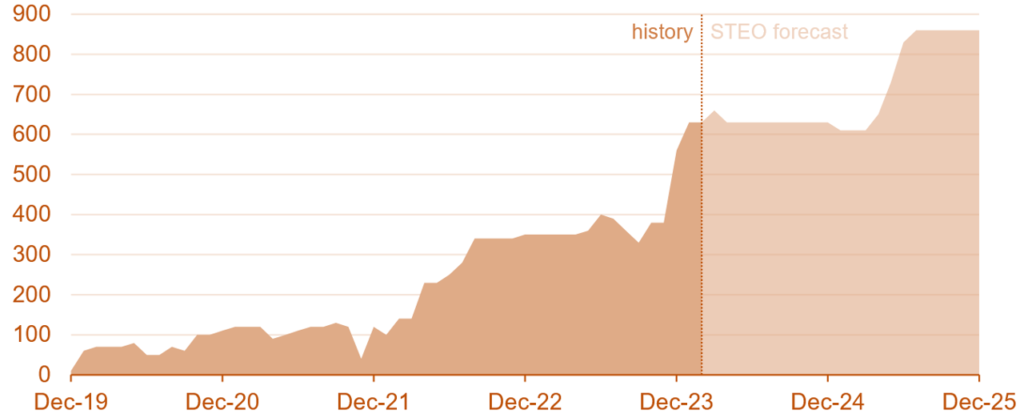Guyana, has emerged as a key player in the global crude oil supply.
Since beginning production in 2019, the country located on South America’s northern coast and neighboring Venezuela, Suriname, Brazil,has ramped up its crude oil output to 645,000 barrels per day (b/d) by early 2024, all from offshore resources in the Stabroek block.
From 2020 to 2023, Guyana increased its crude oil production by an average of 98,000 b/d annually, making it the third-fastest-growing non-OPEC producing country during this period.
Crude oil production has significantly driven Guyana’s economic growth in recent years. In 2022, Guyana’s GDP surged by 62.3%, the highest real GDP growth worldwide that year, according to the International Monetary Fund (IMF).

Guyana’s latest estimate of recoverable oil and natural gas resources exceeds 11 billion oil-equivalent barrels, and exploration continues in the country’s offshore waters.
The discovered oil and natural gas resources are currently situated offshore within the Guyana-Suriname Basin of the Atlantic Ocean.The first major oil discovery in offshore Guyana was made by ExxonMobil in 2015 at what is now the Liza project in the Stabroek block.
Since then, ExxonMobil, along with its partners Hess and the China National Offshore Oil Corporation (CNOOC), has made over 30 additional offshore oil and natural gas discoveries within the Stabroek block.
Guyana’s oil production relies on three floating production, storage, and offloading (FPSO) vessels: Liza Destiny, Liza Unity, and Prosperity.
These vessels extract oil and natural gas from the Liza and Payara projects. They reinject all associated natural gas into wells to support production and use it as on-site fuel. A proposed project plans to transport this associated natural gas onshore to processing facilities via pipeline.
Currently, the project’s partners aim to boost the combined production capacity to about 1.3 million barrels per day (b/d) by the end of 2027.

They plan to achieve this by developing three additional projects: Yellowtail, Uaru, and Whiptail. If successful, this increased production would position Guyana as the second-largest crude oil producer in Central and South America, just behind Brazil.
The future of the corporate partnership at the Stabroek block remains uncertain.
Chevron’s acquisition of Hess, which owns a 30% stake in the Stabroek block, might encounter delays due to arbitration filings by existing block partners ExxonMobil and CNOOC.
These partners assert preemption rights over Hess’s stake in the block. ExxonMobil holds a 45% interest in the Stabroek block, while CNOOC holds a 25% stake.
Venezuela’s claim of sovereignty over the Essequibo region, which comprises over two-thirds of Guyana’s land area, may impact exploration operations in the Stabroek block and adjacent offshore areas.
In December, the International Court of Justice (ICJ) ruled that Venezuela should refrain from taking any action to disrupt the status quo while the case is pending before the ICJ.